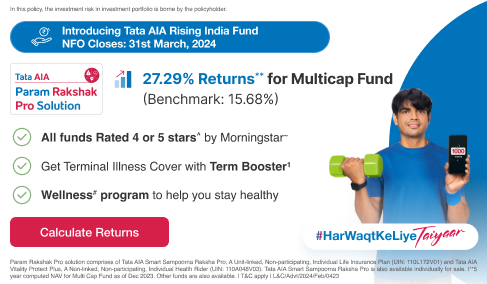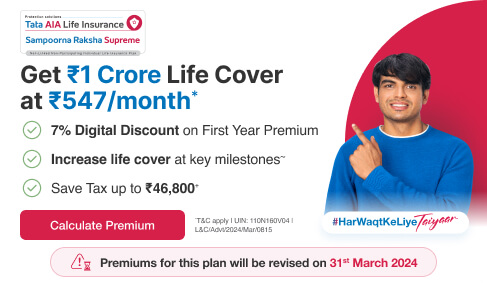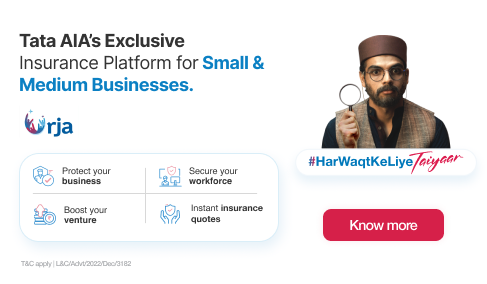02-08-2022 |
You might be the owner of a large restaurant, an e-commerce seller, a freelance photographer, or a doctor with your clinic. But, in the eyes of the Government, you are simply a self-employed person. And every individual in India, whether self-employed or not, with an annual income of more than ₹2.5 Lakh is liable to pay an income tax* to the Government.
However, paying income tax* and filing an income tax* return (ITR) for self-employed people is not as straightforward as it is for salaried people. It’s because they don’t have an HR department to calculate their taxable income and submit their income tax* to the Government. They have to take care of the formalities on their own.
That is why you must understand the self-employment tax rules as per the Income Tax Act of 1961 and plan accordingly.
Who is Considered Self-Employed?

Before anything else, you need to understand who all are considered self-employed assessees as per the Income Tax* Act. An assessee, as defined under Section 2(7) of this Act, is an income-generating entity that is liable to pay an income tax* to the Government of India. The ITR filing rules for different types of assessees are different.
Self-employed assessees are those who sell their products or services without binding under a full-term contract with an employer. As per the Income Tax* Act, any person who makes a profit or gains from a business or profession is known as a self-employed individual.
Some common examples of self-employed assessees include:
- Doctor
- Author
- Trader
- Shopkeeper
- Painter
- Dancer
- Auditor
- Lawyer
- Designer
- Astrologer
Note that to qualify as self-employed, a professional needs to have their own business or practice. For example, a doctor with his clinic or a lawyer having his practice. If you fall under any of the above-mentioned categories, you may have to file your ITR every year as per the self-employed income tax rules.
How to Calculate Income Tax for Self-Employed?
To calculate the self-employment tax in India, the Government offers two methods:
- Calculating your taxable income and the income tax* on a presumptive basis, i.e., without claiming any deductions for your expenses.
- Claim all your expenses during the applicable year and then calculate the tax* on your real profit.
Tax Filing Under the Presumptive Taxation Scheme
As we have mentioned above, you can choose to file your self-employed income tax return on a presumptive basis. Here are a few points that you need to remember if you opt for tax filing under the presumptive taxation scheme:
- The presumptive taxation scheme is available only for self-employed assessees under section 44D of the Income Tax* Act.
- The annual turnover of the assessee must be below ₹2 crores for tax* filing under the presumptive taxation scheme.
- Under this scheme, the minimum income for business owners is deemed to be 8% of their gross receipts. In the case of professionals, the minimum income is deemed to be 50% of their gross receipts.
- The taxable income for business owners and the income tax* that they are liable to pay is calculated based on these percentages.
Tax Filing Under the Real Profit Scheme
The second option for computing self-employed tax in India is by deducting all your expenses from your annual income and then calculating the tax* on your real profit. Below are the points you need to remember if you wish to file your ITR using this method:
- You can claim several deductions while computing your taxable income. These deductions may include your regular expenses incurred towards your business, interest paid by you against business loans, insurance premiums, wages that you pay to your employees, etc.
- Other expenses such as your internet and telephone bills, travel costs, etc. can also be claimed as deductions from your taxable income
- You will need to submit proof for all deductions or expenses claimed by you
- You will have to maintain an account book of your business. In case your annual income exceeds ₹50 Lakh, you will have to get your account book audited by a Chartered Accountant (CA)
- If your business’s annual turnover is more than ₹2 crores, this is the only option for you to file your ITR.
The Tax Rate Applicable for Self-Employed Assessees
Knowing the income tax* rate is essential to calculating your self-employed taxes while filing your ITR. The self-employed income tax rate in India is no different from the income tax* rate for salaried professionals. The slab below depicts the applicable tax* rate for self-employed assessees:
The annual income of the assessee |
The applicable income tax* rate |
Up to ₹2.5 Lakh |
Nil |
Between ₹2.5 Lakh to ₹5 Lakh |
5% of the income exceeding ₹2.5 Lakh |
Between ₹ 5 Lakh to ₹10 Lakh |
₹12,500 + 20% of the income exceeding ₹5 Lakh |
More than ₹10 Lakh |
₹1,12,500 + 30% of the income exceeding ₹10 Lakh |
These rates are applicable for assessees below the age of 60. There are two other income tax* slabs for self-employed senior citizens (those above the age of 60) and super senior citizens (those above the age of 80). You can use a self-employed tax calculator to evaluate the actual income tax* that you need to pay based on your annual income.
How to File a Self-Employed ITR?
As a self-employed assessee, you can file your annual ITR by filling up the ITR-4 or ITR-4S form. If you wish to file your ITR under the presumptive taxation scheme, you can fill up the ITR-4S form, or else, you can fill out the ITR-4 form.
The last date for filing these freelancer tax forms is the 31st of July of every year. If you fail to file your ITR by this date, you can face a penalty of up to ₹10,000.
Conclusion
Make sure that you file your self-employed income tax return by the due date every year. Also, ensure that you calculate your self-employed taxes accurately. If you wish to reduce your taxable income, you can invest in life insurance policies from Tata AIA. Tata AIA Life Insurance policies are affordable and easy to purchase.
L&C/Advt/2022/Jul/1728


 FOR EXISTING POLICY
FOR EXISTING POLICY
 FOR NEW POLICY
FOR NEW POLICY





















